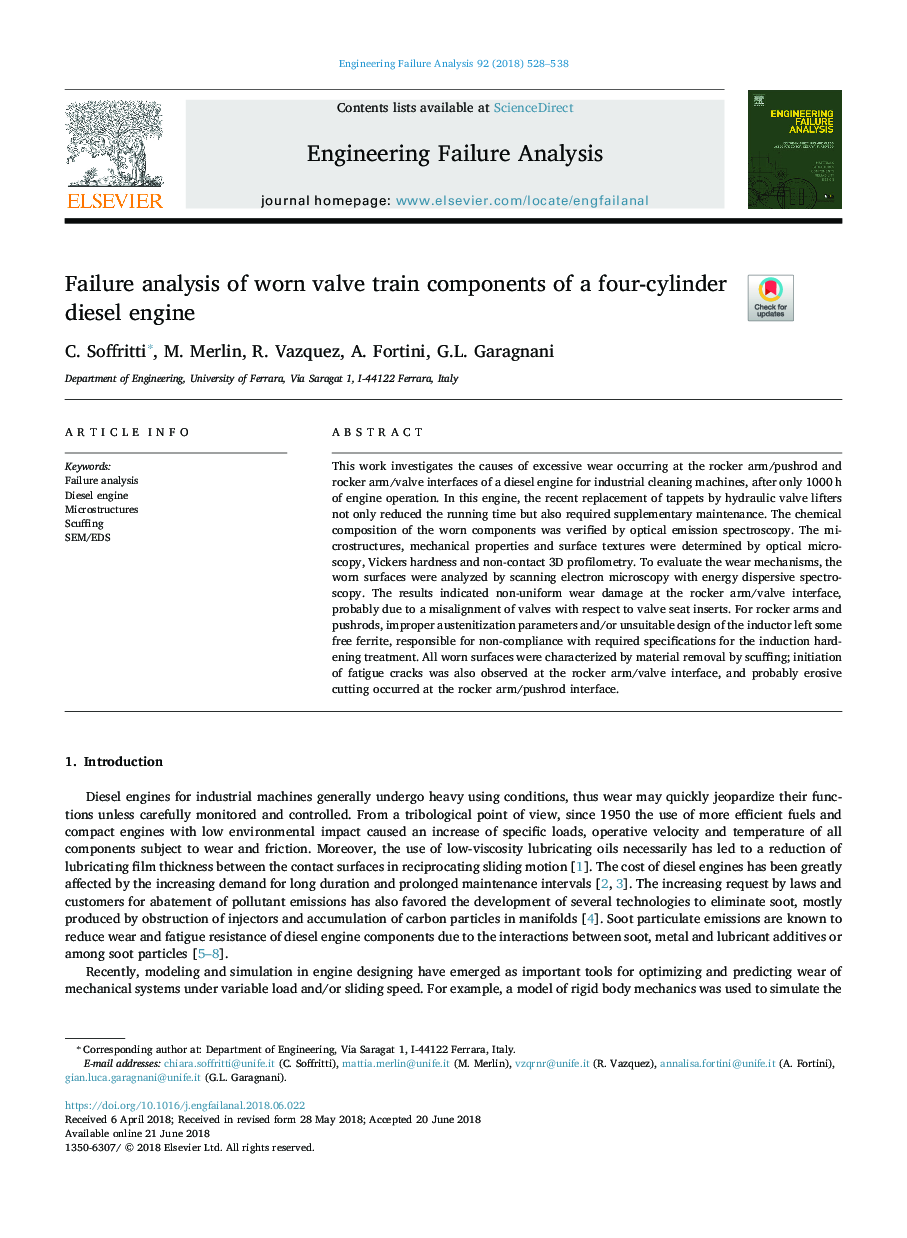| Article ID | Journal | Published Year | Pages | File Type |
|---|---|---|---|---|
| 7167161 | Engineering Failure Analysis | 2018 | 11 Pages |
Abstract
This work investigates the causes of excessive wear occurring at the rocker arm/pushrod and rocker arm/valve interfaces of a diesel engine for industrial cleaning machines, after only 1000â¯h of engine operation. In this engine, the recent replacement of tappets by hydraulic valve lifters not only reduced the running time but also required supplementary maintenance. The chemical composition of the worn components was verified by optical emission spectroscopy. The microstructures, mechanical properties and surface textures were determined by optical microscopy, Vickers hardness and non-contact 3D profilometry. To evaluate the wear mechanisms, the worn surfaces were analyzed by scanning electron microscopy with energy dispersive spectroscopy. The results indicated non-uniform wear damage at the rocker arm/valve interface, probably due to a misalignment of valves with respect to valve seat inserts. For rocker arms and pushrods, improper austenitization parameters and/or unsuitable design of the inductor left some free ferrite, responsible for non-compliance with required specifications for the induction hardening treatment. All worn surfaces were characterized by material removal by scuffing; initiation of fatigue cracks was also observed at the rocker arm/valve interface, and probably erosive cutting occurred at the rocker arm/pushrod interface.
Related Topics
Physical Sciences and Engineering
Engineering
Industrial and Manufacturing Engineering
Authors
C. Soffritti, M. Merlin, R. Vazquez, A. Fortini, G.L. Garagnani,
